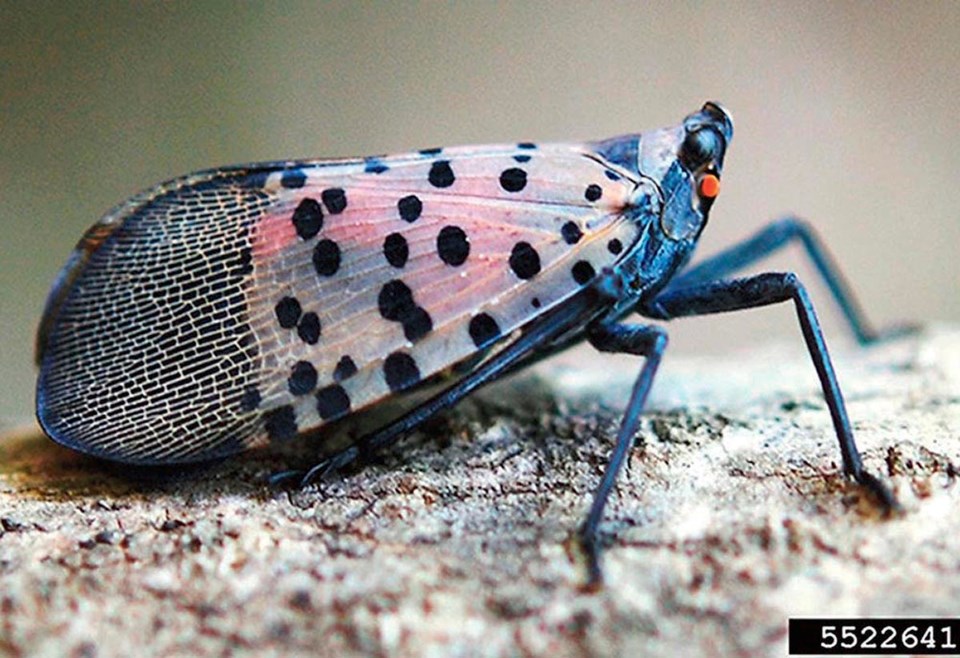Journal Staff
Officials are warning of another invasive pest, and this one could pose a risk to both farm crops and forests.
The spotted lanternfly is a colourful, inch-long insect native to southeast Asia that feeds on grapes, cherries, apples and other fruits, as well as pine, oak, maple, poplar and other trees, according to the Canadian Food Inspection Agency.
First detected in North America in 2014 in Pennsylvania, it has since spread to five other states including New York, Ontario’s neighbour to the east.
Because it lays eggs on just about anything, including vehicles, some experts say it’s only a matter of time before it appears on this side of the border.
Spotted lanternflies eat the plant’s sap and excrete a sweet, sticky waste called “honeydew.” They wound and weaken the host, and their waste attracts a mould that grows on things like plants, decks and picnic tables.
They are technically a planthopper and the adults look a bit like a moth. But the spotted lanternfly’s unique colouring makes it easy to distinguish from other native and naturalized insects, The CFIA says.
The agency has added the bug to its official pest list, and says early detection will make containment easier if and when it does reach Canada.
If you think you’ve seen one, capture it and place in a container, or take a photo, and contact the Canadian Food Inspection Agency or call 1-800-442-2342.
